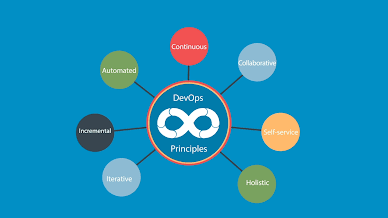How to Reduce Cloud Costs Using DevOps Automation
Cloud computing has
revolutionized the way businesses manage their infrastructure by providing
scalable, on-demand resources. However, with this convenience comes the risk of
spiraling costs if cloud resources aren’t managed efficiently. DevOps automation
offers a powerful solution to this challenge by helping businesses streamline
operations, optimize resource usage, and ultimately reduce cloud costs.
Understanding DevOps Automation
DevOps is a set of practices that
fosters collaboration between development and operations teams, while
automation in DevOps involves the use of tools to automate repetitive tasks
such as testing, deployments, and infrastructure management. When combined with
cloud infrastructure, DevOps automation enables organizations to optimize
resource utilization, avoid unnecessary spending, and ensure that cloud
environments are operating efficiently.
Key Strategies to Reduce Cloud
Costs with DevOps Automation
- Automated Infrastructure Scaling Cloud
providers such as AWS, Azure, and Google Cloud offer the ability to
automatically scale resources based on demand. Using DevOps automation,
you can implement auto-scaling policies that dynamically adjust the number
of servers, storage, or compute power depending on the workload. This
ensures that you are only paying for the resources you need when you need
them.
For example, during periods of
high traffic, the system can automatically add more instances to handle the
load, and during downtime, it can scale back, reducing unnecessary costs. By
automating this process, businesses avoid manual oversight and wasted resources.
- Infrastructure as Code (IaC) DevOps promotes
the concept of Infrastructure as Code (IaC), where infrastructure is
managed through code rather than manually. Tools like Terraform, AWS
CloudFormation, and Ansible allow teams to provision, manage, and automate
cloud infrastructure. With IaC, you can define and optimize the exact
resources required for different environments (development, testing,
production), preventing over-provisioning.
Additionally, IaC ensures that
resources are consistently deployed across environments, minimizing the risk of
misconfiguration, which can lead to costly inefficiencies.
- Automated Cloud Resource Scheduling Many
businesses have cloud resources running 24/7, even though they may only be
used during specific hours. DevOps automation tools can schedule cloud
resources to automatically shut down during off-hours or weekends when
they are not needed. By automating start/stop schedules for non-critical
instances such as development or testing environments, businesses can
significantly reduce cloud costs.
For instance, using tools like
AWS Lambda or Azure Automation, you can automate the shutdown of non-essential
services outside of business hours, leading to cost savings without impacting
productivity.
- Continuous Monitoring and Cost Alerts One of
the advantages of cloud computing is the ability to monitor usage in real
time. DevOps automation can integrate monitoring tools like AWS
CloudWatch, Azure Monitor, or Google Cloud Monitoring to track resource
consumption and identify potential inefficiencies. By setting up cost
alerts and thresholds, businesses can receive real-time notifications when
cloud expenses approach predefined limits, allowing them to take
corrective action immediately.
Automated monitoring also helps
detect and eliminate unused or underutilized resources, such as orphaned
storage volumes or idle compute instances, that often lead to unnecessary
spending.
- Automated Cost Optimization through Right-Sizing
Another way to reduce cloud costs is by right-sizing resources to match
workload requirements. Often, organizations provision more resources than
necessary, leading to inflated costs. DevOps automation tools can analyze
usage patterns and automatically adjust the size of instances, storage, or
compute power to align with actual demand.
For example, AWS offers services
like AWS Trusted Advisor, which provides recommendations for right-sizing based
on performance data. Automated tools can then implement these suggestions
without requiring manual intervention, optimizing resource allocation and
reducing costs.
- Automated Backup and Disaster Recovery Cloud
providers typically offer backup and disaster recovery options, but
businesses may over-allocate resources for these functions, leading to
excessive costs. DevOps automation can help ensure that backups and
recovery processes are optimized. For instance, automating backup
schedules and retention policies based on actual business needs can
prevent unnecessary storage costs.
Furthermore, automated disaster
recovery testing ensures that resources are only used during scheduled test
periods, avoiding unnecessary overhead while ensuring your recovery plans are
effective.
Conclusion
DevOps automation is a critical
tool for businesses looking to optimize cloud costs without sacrificing
performance or scalability. By leveraging automated infrastructure scaling,
resource scheduling, continuous monitoring, and right-sizing, organizations can
ensure that they only pay for what they use and eliminate waste.



Comments
Post a Comment